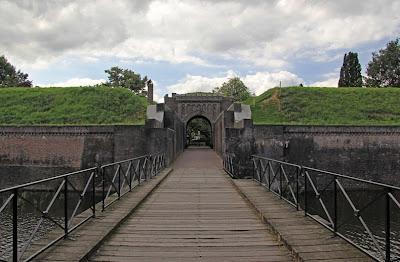
Naarden is a municipality and a town in the province of North Holland in the Netherlands, shaped in the form of a star. This small town is a textbook example of a popular style of fortification that evolved in Europe during the 16th century. Naarden’s star fortification is complete with fortified walls and a moat which are in as good as state as five centuries ago. In fact, Naarden is one of the best preserved fortified towns in Europe today.
Back in the 13th century, Naarden was a small fortified town overlooking a stretch of dry ground between the sea and the marshes of the river Vecht. This stretch of land was the only route from the east to Amsterdam and its surrounding lands, making Naarden a strategic fortress. But defense works on Naarden were old and poorly maintained.
In the 17th century when the French King Louis XIV with the help of his allies England, Cologne and Munster, invaded the Netherlands, Naarden was taken over easily. At this time the Netherlands were an important economic and political power in western Europe. They captured Utrecht and made it a base to invade the rest of the country from. However, the rest of the invasion was a disaster; the Dutch flooded the land between the rivers and the sea making it impossible for the French to move forward. In 1673 Naarden was back in Dutch hands. After this recapture the fortifications were updated to modern standards. Most of the fortifications that exist today date from this period. During the 19th century the fortifications were updated, resulting in the construction of many new bomb shelters and other army-related buildings like barracks. At the end of the 19th century the increased fire power and range of the artillery made the defenses at Naarden useless. Instead, emphasis was given on bomb shelters most of which still exist.
After the First World War the need for Naarden as a fortress was over. The army left and it was turned into a monument and preserved just in time to prevent it from being demolished. One of the bastions holds a museum about the fortress, which gives a lot of information about the town's history. The museum also gives access to all the tunnels and casemates, making it a must in exploring the fortress. Tours are provided by boat around the lake.
Today, Naarden is one of the remaining bastions in the Netherlands and is the only fortification in Europe that has unique double walls and moats.































